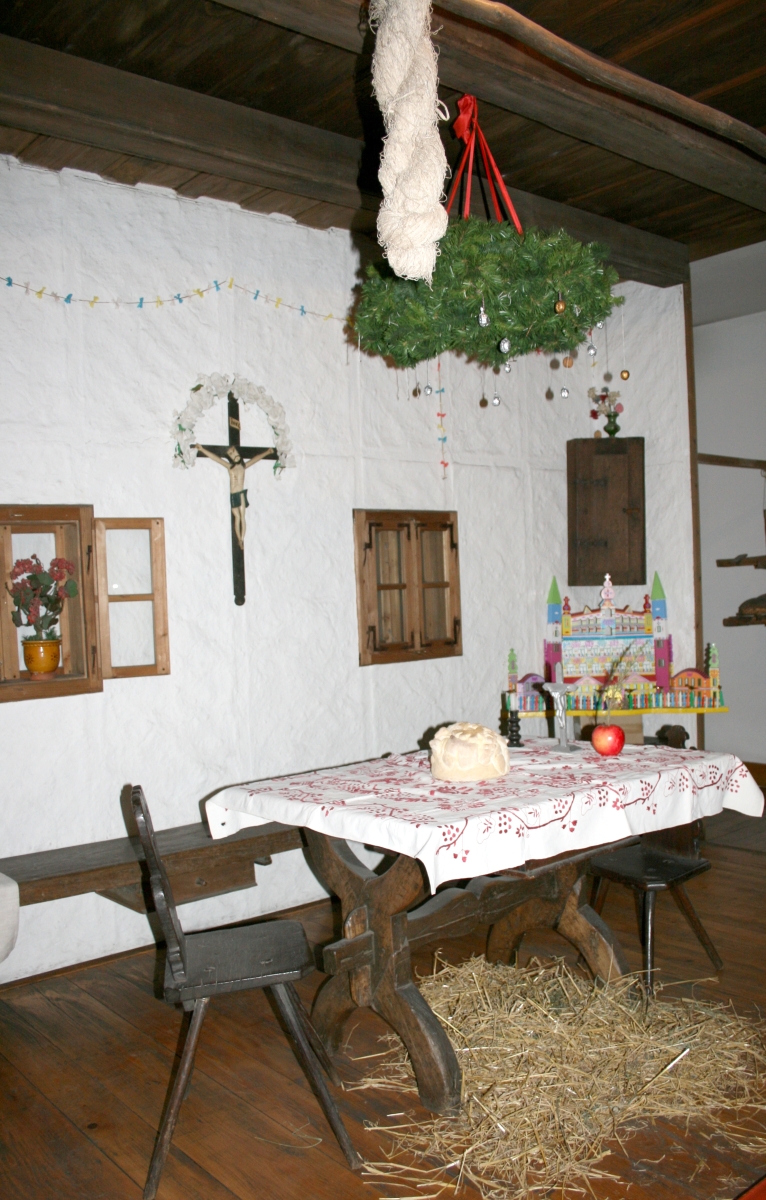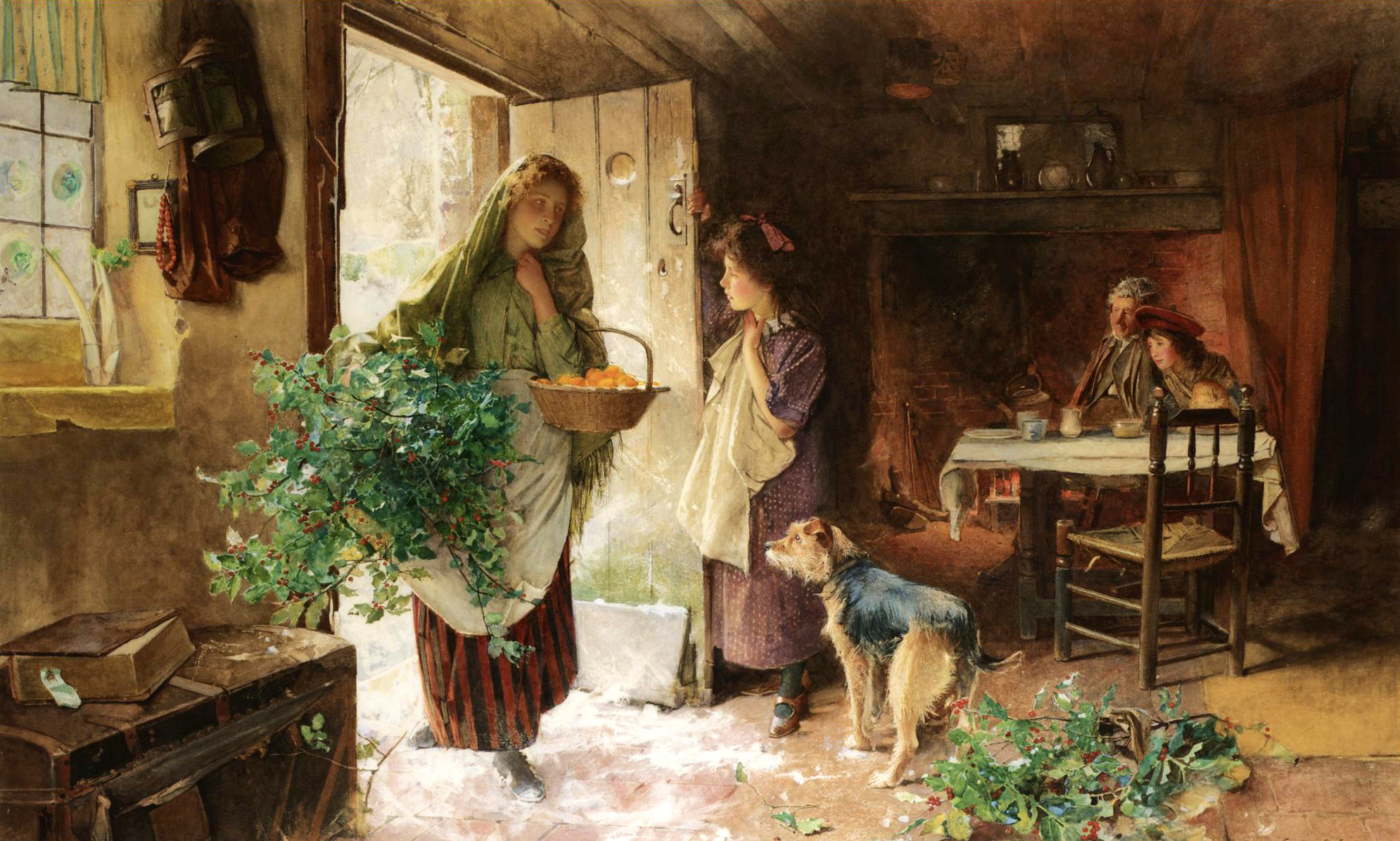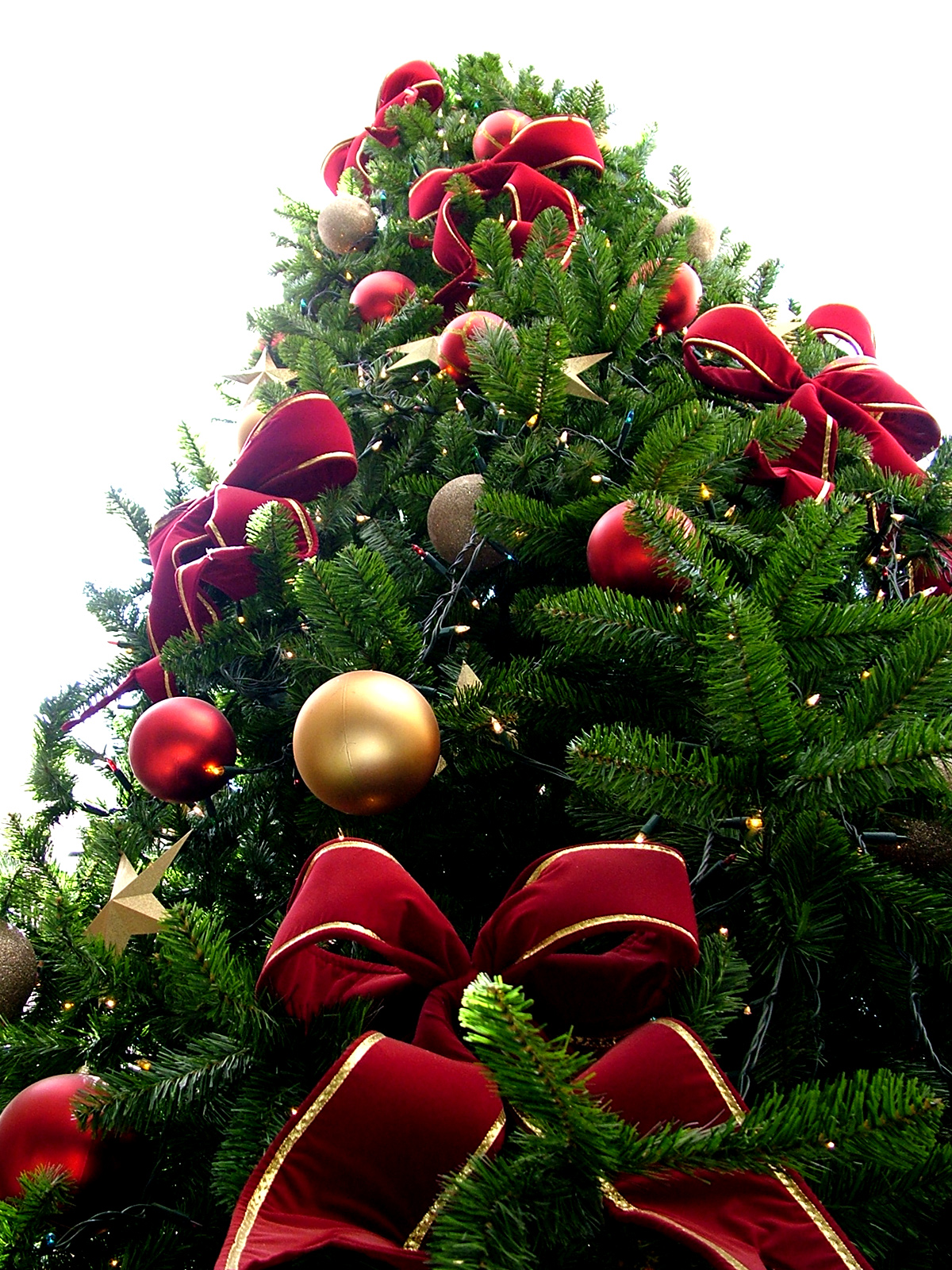|
Podłaźniczka
''Podłaźniczka'', ''polazňička'' is Polish and Slovakian Christmas decoration. It was usually made of the top of a conifer tree turned upside down, which was then decorated with tissue paper, candies, apples, nuts, or typical Polish worlds, or of straw. This decoration was then hung over the Vigil table or in a corner. It was supposed to bring luck and prosperity to the household. Podłaźniczka originates from the tradition of '' połaźnik''. In Serbia, such a branch was called ''šumka od položenjca'' ( sr-Cyrl, шумка од положења), or ''polaznikova šumka'' ( sr-Cyrl, полазникова шумка, link=no). History The custom of ''podłaźniczka'' is related to the custom of the '' połaźnik''. Podlaznik was the first guest to visit a house on Christmas Day. The arrival of a healthy, young, and happy person was supposed to bring luck to the household. Podlaznik often brought with him green twigs, which in Poland were called ''podłaźniczki''. A si ... [...More Info...] [...Related Items...] OR: [Wikipedia] [Google] [Baidu] |
Polaznik
In Slavic traditions, a ''Polaznik'' uk, полазник, polaznik sk, polažeň, polaznik sl, polažar, polažič sr, полажајник, polažajnik, полаженик, polaženik, походник, pohodnik bg, (с)полезник, (s)poleznik, полазник, polaznik, по(х)ожняк, po(ch)ożnjak, походняк, pochodnjak, полазница, polaznica. is the first guest (sometimes called the "divine guest") who comes to a house at Christmas or on some holiday between Demetrius of Thessaloniki, St. Demetrius day and Epiphany (holiday), Epiphany to bring luck, prosperity, health, and wealth for the coming year. Less frequently, the role of the polaznik is taken over by an animal, which is brought into the house, which is also supposed to bring luck. The ritual is known mainly to Ukrainians, Poles, Slovaks, Slovenes, Serbs, Croats, and Bulgarians. It is believed that the polaznik is a messenger of the ancestors, which connects the world of the living and the dead ... [...More Info...] [...Related Items...] OR: [Wikipedia] [Google] [Baidu] |
Christmas Tree
A Christmas tree is a decorated tree, usually an evergreen conifer, such as a spruce, pine or fir, or an artificial tree of similar appearance, associated with the celebration of Christmas. The custom was further developed in early modern Germany where German Protestant Christians brought decorated trees into their homes. It acquired popularity beyond the Lutheran areas of Germany and the Baltic governorates during the second half of the 19th century, at first among the upper classes. The tree was traditionally decorated with "roses made of colored paper, apples, wafers, tinsel, ndsweetmeats". Moravian Christians began to illuminate Christmas trees with candles, which were often replaced by Christmas lights after the advent of electrification. Today, there is a wide variety of traditional and modern ornaments, such as garlands, baubles, tinsel, and candy canes. An angel or star might be placed at the top of the tree to represent the Angel Gabriel or the Star of Bethle ... [...More Info...] [...Related Items...] OR: [Wikipedia] [Google] [Baidu] |
Podlaznik
In Slavic traditions, a ''Polaznik'' uk, полазник, polaznik sk, polažeň, polaznik sl, polažar, polažič sr, полажајник, polažajnik, полаженик, polaženik, походник, pohodnik bg, (с)полезник, (s)poleznik, полазник, polaznik, по(х)ожняк, po(ch)ożnjak, походняк, pochodnjak, полазница, polaznica. is the first guest (sometimes called the "divine guest") who comes to a house at Christmas or on some holiday between St. Demetrius day and Epiphany to bring luck, prosperity, health, and wealth for the coming year. Less frequently, the role of the polaznik is taken over by an animal, which is brought into the house, which is also supposed to bring luck. The ritual is known mainly to Ukrainians, Poles, Slovaks, Slovenes, Serbs, Croats, and Bulgarians. It is believed that the polaznik is a messenger of the ancestors, which connects the world of the living and the dead. Regional customs Poland In Poland, pol ... [...More Info...] [...Related Items...] OR: [Wikipedia] [Google] [Baidu] |
Riddle (tool)
A riddle is a large sieve used to separate soil or compost particles, or for separating soil from vegetables. Etymology English "riddle" is from Middle English ''ridelle'' "coarse sieve," from late Old English ''hriddel'' "sieve," altered by dissimilation from Old English ''hridder'' "sieve" Description A riddle may be square, rectangular or circular in shape, with a rim made from wood, metal, plastic or beechwood, holding in place a steel wire mesh that may either be handwoven or machine-made. A typical circular riddle is approximately in diameter and the mesh may have a spacing of something like , , , , or . A riddle is typically used to improve soil quality by allowing the gardener to sieve through soil and remove stones, twigs, large lumps of clay etc. and hence provide a finer tilth. Smaller riddles can be used to separate soil very finely for seeds and early potting. Riddles may also be used to help remove soil from harvested vegetables. See also *Garden tool *Riddle ... [...More Info...] [...Related Items...] OR: [Wikipedia] [Google] [Baidu] |
Saturnalia
Saturnalia is an ancient Roman festival and holiday in honour of the god Saturn, held on 17 December of the Julian calendar and later expanded with festivities through to 23 December. The holiday was celebrated with a sacrifice at the Temple of Saturn, in the Roman Forum, and a public banquet, followed by private gift-giving, continual partying, and a carnival atmosphere that overturned Roman social norms: gambling was permitted, and masters provided table service for their slaves as it was seen as a time of liberty for both slaves and freedmen alike. A common custom was the election of a "King of the Saturnalia", who gave orders to people, which were followed and presided over the merrymaking. The gifts exchanged were usually gag gifts or small figurines made of wax or pottery known as ''sigillaria''. The poet Catullus called it "the best of days". Saturnalia was the Roman equivalent to the earlier Greek holiday of Kronia, which was celebrated during the Attic month of He ... [...More Info...] [...Related Items...] OR: [Wikipedia] [Google] [Baidu] |
Koliada
Koliada or koleda (Cyrillic: коляда, коледа, колада, коледе) is the traditional Slavic name for the period from Christmas to Epiphany or, more generally, to Slavic Christmas-related rituals, some dating to pre-Christian times. It represents a festival or holiday, celebrated at the end of December to honor the sun during the winter solstice. It also involves groups of singers who visit houses to sing carols. Terminology The word is still used in modern Ukrainian ("Коляда", Koliadá), Belarusian (''Каляда'', Kalada, Kaliada), Polish (Szczodre Gody ''kolęda'' ), Bulgarian, Macedonian, Serbo-Croatian (''Коледа, Коледе, koleda, kolenda''), Lithuanian (''Kalėdos, Kalėda''), Czech, Slovak, Slovene (''koleda'') and Romanian (''Colindă''). The word used in Old Church Slavonic language (Колѧда - Kolęnda) sounds closest to the current Polish language pronunciation, as Polish is one of two Slavic languages which retains the ... [...More Info...] [...Related Items...] OR: [Wikipedia] [Google] [Baidu] |
Badnjak (Serbian)
The ''badnjak'' ( sr-Cyrl, бадњак, ), also called ''veseljak'' (, , literally "the one who brings joy" in Serbian), is a tree branch or entire tree that is central to Serbian Christmas celebrations. It is placed on a fire on Christmas Eve and its branches are later brought home by worshipers. The tree from which the ''badnjak'' is cut, preferably a young, straight and undamaged Austrian oak, is ceremonially felled early on the morning of Christmas Eve. The felling, preparation, bringing in, and laying on the fire, are surrounded by elaborate rituals, with many regional variations. The burning of the log is accompanied by prayers that the coming year brings food, happiness, love, luck, and riches. The log burns on throughout Christmas Day, when the first visitor strikes it with a poker or a branch to make sparks fly, while wishing that the family's happiness and prosperity be as abundant as the sparks. As most Serbs today live in towns and cities, the ''badnjak'' is often sy ... [...More Info...] [...Related Items...] OR: [Wikipedia] [Google] [Baidu] |
Moravia
Moravia ( , also , ; cs, Morava ; german: link=yes, Mähren ; pl, Morawy ; szl, Morawa; la, Moravia) is a historical region in the east of the Czech Republic and one of three historical Czech lands, with Bohemia and Czech Silesia. The medieval and early modern Margraviate of Moravia was a crown land of the Lands of the Bohemian Crown from 1348 to 1918, an imperial state of the Holy Roman Empire from 1004 to 1806, a crown land of the Austrian Empire from 1804 to 1867, and a part of Austria-Hungary from 1867 to 1918. Moravia was one of the five lands of Czechoslovakia founded in 1918. In 1928 it was merged with Czech Silesia, and then dissolved in 1949 during the abolition of the land system following the communist coup d'état. Its area of 22,623.41 km2 is home to more than 3 million people. The people are historically named Moravians, a subgroup of Czechs, the other group being called Bohemians. Moravia also had been home of a large German-speaking populati ... [...More Info...] [...Related Items...] OR: [Wikipedia] [Google] [Baidu] |
Spiš
Spiš (Latin Latin (, or , ) is a classical language belonging to the Italic branch of the Indo-European languages. Latin was originally a dialect spoken in the lower Tiber area (then known as Latium) around present-day Rome, but through the power of the ...: ''Cips/Zepus/Scepus/Scepusia'', german: Zips, hu, Szepesség/Szepes, pl, Spisz) is a region in north-eastern Slovakia, with a very small area in south-eastern Poland (14 villages). Spiš is an informal designation of the territory, but it is also the name of one of the 21 List of tourism regions of Slovakia, official tourism regions of Slovakia. The region is not an administrative division in its own right, but between the late 11th century and 1920 it was an administrative county of the Kingdom of Hungary, (see separate article Szepes county). Etymology The name is probably related to the appellative ''spiška'', ''špiška'' known from Slovak (Eastern Slovakia and Orava (region), Orava) and Moravian dialects (Han ... [...More Info...] [...Related Items...] OR: [Wikipedia] [Google] [Baidu] |
Himmeli
A straw mobile is a mobile made from reeds, straw or other similar material bound together with string, often forming geometric shapes such as octahedrons, and can be decorated further with craft supplies such as wood, yarn, or feathers. Such mobiles have been traditional in Eastern Europe, Scandinavia, and Russia where they may serve as symbolic or religious decorations. Modern variations can be made from materials like brass or plastic. Name Different cultures have different names for straw mobiles. For example, in some Germanic cultures they are often known as himmeli (heavens), while in Slavic cultures they are known as pajak (spider). } – "heaven" and "sky") The himmeli base shape consists of 12 fragments, which symbolize the 12 months. They are used as decorations from Christmas until Midsummer. Modern himmeli are also made of plywood, paper and even plastic straws. Their purpose is to ensure a good harvest in the following year, and it functions as a home for the crop ... [...More Info...] [...Related Items...] OR: [Wikipedia] [Google] [Baidu] |
Baubles
Christmas ornaments, baubles, "Christmas bulbs" or "Christmas bubbles" are decoration items, usually to decorate Christmas trees. These decorations may be woven, blown (glass or plastic), molded (ceramic or metal), carved from wood or expanded polystyrene, or made by other techniques. Ornaments are available in a variety of geometric shapes and image depictions. Ornaments are almost always reused year after year rather than purchased annually, and family collections often contain a combination of commercially produced ornaments and decorations created by family members. Such collections are often passed on and augmented from generation to generation. Festive figures and images are commonly preferred. Lucretia P. Hale's story "The Peterkins' Christmas-Tree" offers a short catalog of the sorts of ornaments used in the 1870s: The modern-day mold-blown colored glass Christmas ornament was invented in the small German town of Lauscha in the mid-16th century. History Invent ... [...More Info...] [...Related Items...] OR: [Wikipedia] [Google] [Baidu] |





.jpg)